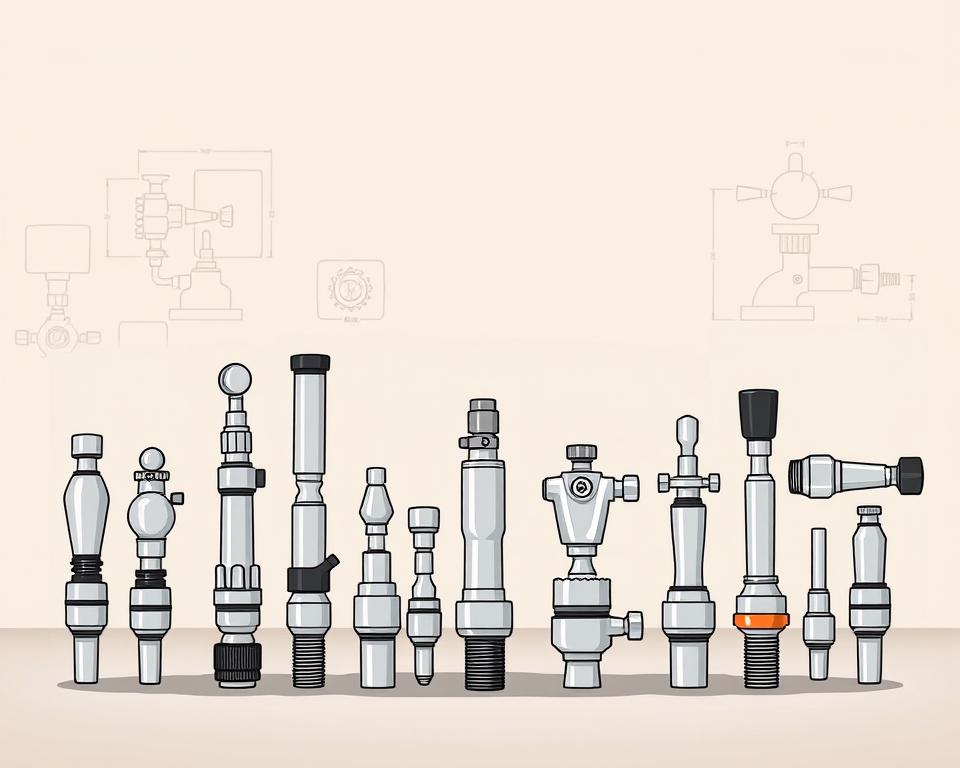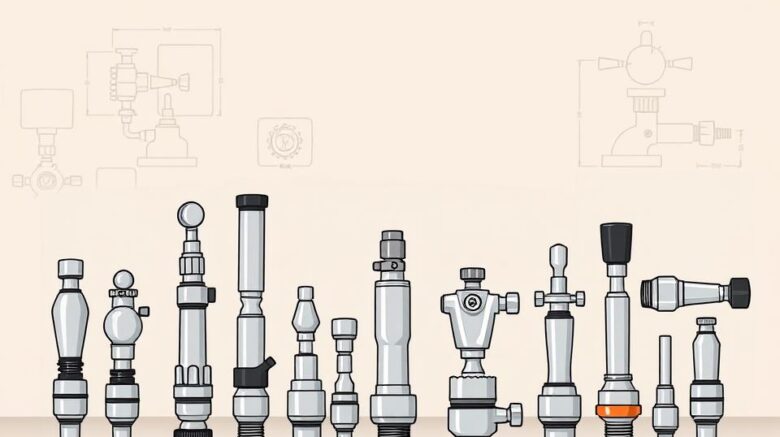Essential Kegerator Coupler Parts for Your Home Brew Setup
Curious why your draft beer ends up too foamy or disappointingly flat? The secret lies in the small but mighty components connecting your keg to the tap. If you don’t have the proper hardware, even a great beer can go flat and lose its taste.
Installation Parts Supply understands that flawless pours begin with reliable components. No matter if you brew at home or simply enjoy draft beer, knowing these Sanke keg coupler parts makes all the difference.
From washers to gas lines, each part plays a role in maintaining pressure and flavor. More than nine out of ten pour problems stem from mismatched or worn parts. With a bit of know-how, you can keep your setup working without a hitch.
Central Ideas
- The correct coupler choice means perfect carbonation and flavor.
- Installation Parts Supply provides reliable plumbing solutions for draft systems.
- Keeping parts clean and checked avoids typical pouring glitches.
- The style of coupler depends on the beer you’re pouring.
- Coupler faults are behind most draft system breakdowns.

What Is a Kegerator Coupler?
The perfect draft beer starts with the right connection between your keg and tap. Think of the keg coupler as the connector between your CO₂ cylinder or nitrogen tank and the beer line, employing pressurized gas to deliver beer flawlessly to your taps. It’s the heart of your draft beer system: no coupler, no flow.
That tiny gadget serves a dual purpose: gas delivery to pressurize and valve control to pour your beer. Inside, you’ll find a probe, a check valve, and separate ports for gas and liquid. Together, they keep your beer fizzy and antifoam.
| Component | Role | Common Issues |
|---|---|---|
| Probe | Punctures the keg seal | Misalignment causes leaks |
| Check Valve | Stops beer from flowing backward | Worn valves lead to flat beer |
| Gas/Liquid Ports | Links to tubing | Loose fittings create foam |
Seventy-five percent of newcomers misattach the coupler, causing issues. The result? Foamy messes, leaks, or worse, spoiled beer. Installation Parts Supply supplies charts and video tutorials to guide you.
Even “universal” styles need to correspond with your keg’s standards. Using the wrong coupler can harm both your pour and your gear.
Which Keg Coupler Is Right for You?
Different beers call for different couplers. Using the proper coupler keeps your beer fizzy and flavorful. Use these tips to select your coupler.
D System (Sankey) Coupler
Most North American brews—about 85%—use this style. That valve locks onto domestic kegs with ease. Quick hint: Find the “Sankey” imprint on it.
Nitro (U) Coupler
The harp emblem identifies it for nitrogen blends like Guinness. It uses a unique gas blend (75% nitrogen) to create that creamy head. Don’t jam a U-style onto a regular keg—no proper seal results.
S System (European Sankey) Coupler
European kegs like Heineken fit this left-twist coupler. Its reverse thread stops you from screwing it onto a D keg. It’s roughly an inch taller than the U.S. version.
A, G, and M System Couplers
UK/German imports call for these unique couplers:
- A-Type Coupler: Fits Paulaner and Warsteiner kegs perfectly. Its sliding latch design is fail-safe.
- G-Type Coupler: Tri-flat stem locks onto Bass & Boddingtons. Britain’s go-to pub coupler.
- M System: Made for Schneider Weisse kegs. The slide-lock clicks when secure.
Installation Parts Supply color-codes their compatibility guides—green for D, black for U, blue for S. A brewery in the Midwest reclaimed $3,000 a year after matching couplers properly. Remember: True compatibility beats “universal” claims every time.
Key Coupler Components Explained
Smooth flows come from well-crafted coupler pieces. Together, they keep carbonation in and foam out. Let’s break down the key hardware that keeps your system running.
Probe and Check Valve
A stainless probe punctures the seal to regulate flow. Premium models last 3x longer than economy versions. Below it, the check valve blocks backflow—Installation Parts Supply’s most-replaced part.
Hex Nut and Washers
Everything tightens up around the hex nut. Brass suits budgets, but stainless steel resists corrosion. Pair it with nitrile washers for cold temperatures—EPDM rubber cracks faster below 40°F.
| Component | Material | Advantage |
|---|---|---|
| Coupler Probe | SS | Resists wear |
| Check Valve | FDA-approved plastic | Stops foam issues |
| Coupler Nut | Brass/Stainless | Cost-effective & durable |
Gas & Beer Ports
Your gas port should see 20–30 PSI pressure. Incorrect pressure spells foam issues. Liquid ports work best with 3/16″ ID tubing—1/4″ lines increase turbulence. Rebuild kits with FDA seals simplify maintenance.
Pro Tip: Swap O-rings every 6 months or 50 kegs. A few dollars in washers beats hundreds in repairs.
Coupler Installation Guide
Install correctly for flawless drafts. Proper installation prevents foam, leaks, and flat beer. Follow these steps to connect everything smoothly.
Connecting the Coupler to the Keg
Lift the handle and align the coupler’s lugs with the keg’s slots. Twist until firm; don’t over-torque or harm the seal. Slim models save 4–5″ of headroom.
Installation Parts Supply’s torque wrench ensures hex nuts are secured at 8–10 ft-lbs. Most leaks—about 80%—come from probe misalignment. Always use fresh washers to maintain pressure.
Attaching Gas and Beer Lines
Hook the gas line on with 5/16″ fittings. Seal threads to stop CO₂ from escaping. For beer lines, 10–12 feet of 3/16″ tubing balances pressure drop.
| Task | Tool | Tip |
|---|---|---|
| Gas Line | Thread sealant | Test at 30 PSI for bubbles |
| Draft Line | Tubing cutter | Keep ends square for seals |
| Pressure Test | Leak detector | Monitor for a full day |
Modern rigs offer app-based pressure feedback. A Denver brewery cut foam by 40% using quick-connects from Installation Parts Supply. Turn off gas immediately if you spot big leaks.
Troubleshooting Common Coupler Issues
Foamy eruptions are the quickest way to waste beer. Most pouring problems stem from simple fixes once you know where to look. Here are the usual culprits and how to remedy them.
Foamy Beer Solutions
Foam is blamed in nearly 70% of draft problems. Start by checking your temperature—ideally 38°F for most ales. If it’s too warm, carbonation goes off too quickly.
Check each draft line connection next. A soapy water solution reveals gas leaks through bubbles. Use a wrench to snug loose parts, avoiding over-torque.
- Ball Check Valve failure causes intermittent flow—listen for hissing sounds
- Not sure on PSI? Use this guide:
| Style | CO₂ Pressure | Nitrogen Mix |
|---|---|---|
| Lagers | 10–12 | N/A |
| Stouts | 25–30 | 75% nitrogen |
Loose Coupler Issues
Loose couplers almost always trace back to worn seals. Installation Parts Supply reports this fixes 40% of attachment issues. Warped coupler faces may need replacement.
Use plastic shims to level off rough keg tops. These inexpensive plastic wedges stabilize wobbling connections. Low-profile models solve clearance problems in compact coolers.
Pro Tip: Their emergency washer kit contains five critical seals. Staff who learned these tips reduced waste by nearly 20% in Chicago.
Remember—frost on your CO₂ tank signals overuse. Allow the tank to warm up prior to any valve tweaks. Annual gauge calibration keeps readings true.
Maintenance for Your Coupler
Hygienic systems yield the best flavor. Over time, residue builds up, affecting flavor and dispensing performance. A simple routine keeps everything running smoothly.
Coupler Teardown
First, disassemble the coupler. Take off the handle, pull out the probe and valve. Let the parts sit in warm PBW solution (1 oz/gallon) for 15–20 minutes. It dissolves yeast and hop deposits.
Our brushes get into the smallest crevices. Don’t forget the ball valve—it accumulates debris. Rinse thoroughly to avoid soapy aftertastes.
Choosing the Right Cleaning Solution
Powdered Brewery Wash excels at safe cleaning. Acid cleaners work faster but can damage rubber over time. For commercial setups, ultrasonic systems blast away debris with sound waves.
- Drying: Remove moisture with air or cloth.
- Disinfecting: Meet FDA CFR 117: 30 seconds to sanitize.
- Logs: Track cleanings with a template.
Ultraviolet systems help sterilize parts. Always neutralize wastewater—PBW is alkaline and harms pipes. A little effort ensures quality pours and extends your system’s life.
Wrapping It Up
Achieve brewery-quality pours with expert hardware know-how. Choose compatible parts, maintain them well, and install correctly. Installation Parts Supply backs you with expert help and discount rebuild kits.
Did you know? Routine care can extend your equipment’s life by 7 years. Download their free compatibility checklist or join a brewmaster webinar for pro tips. An annual check-up guarantees smooth service—just listen to customers with five years of trouble-free use.
Upgrade now—stop by Installation Parts Supply and boost your home setup.
